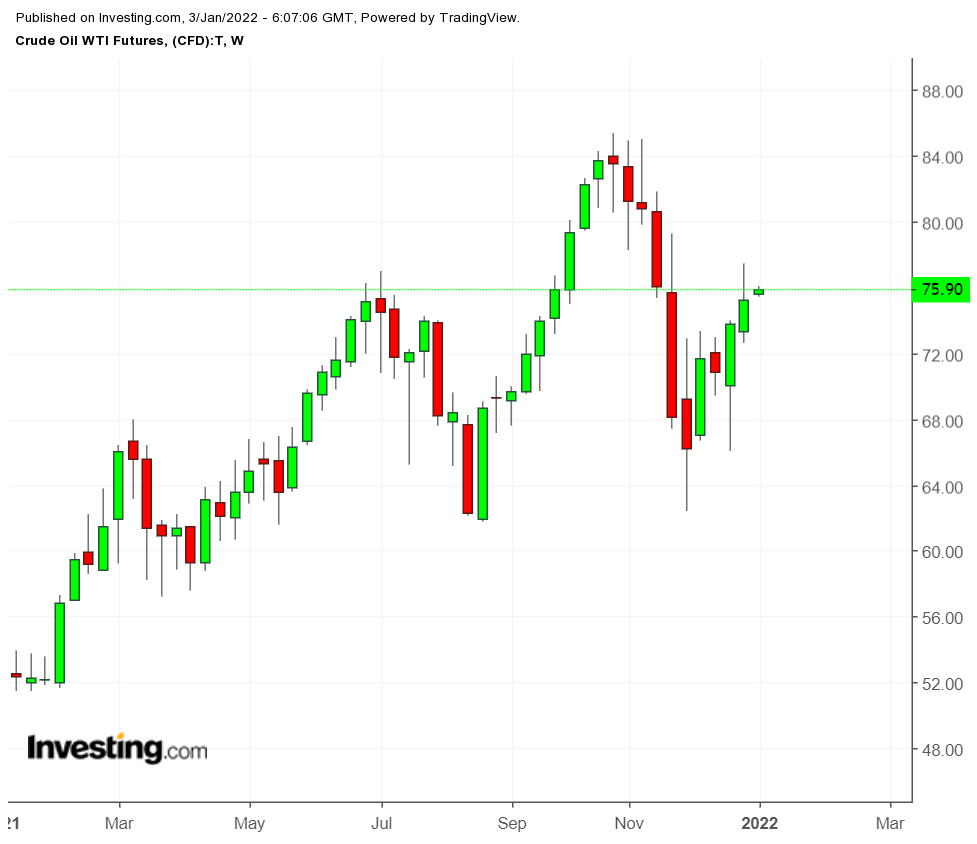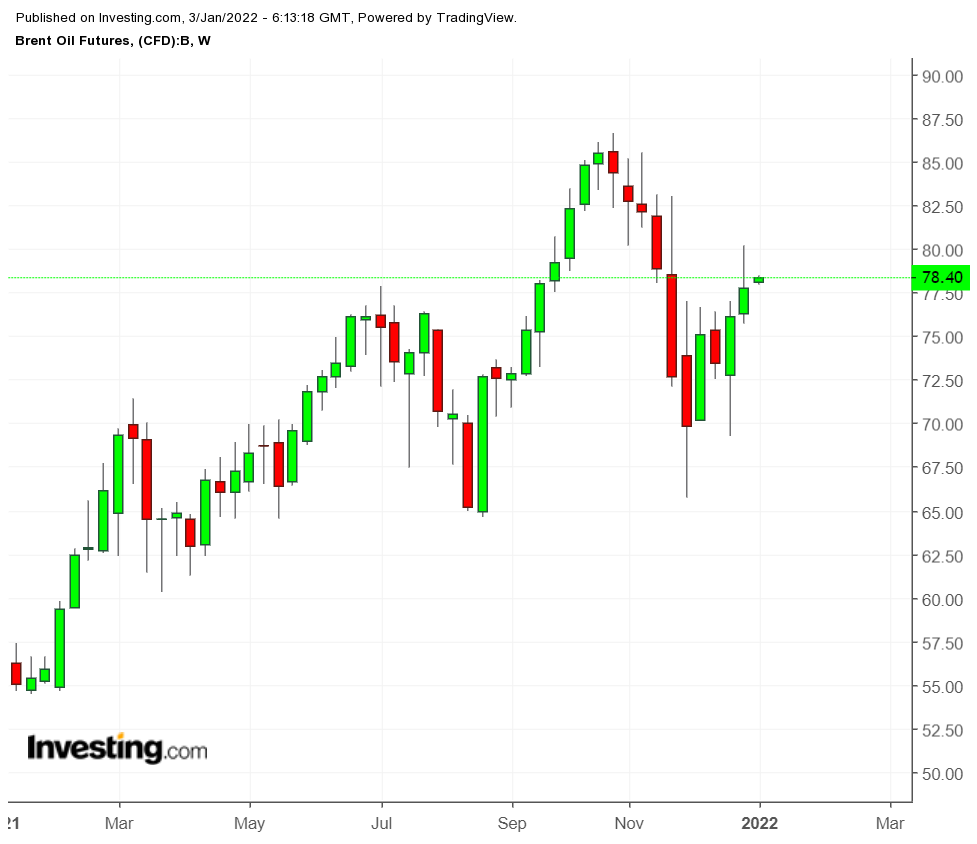Oil's first week of the year could be very much like the opening week of 2021, where positive OPEC+ action could put a firm floor under a market not entirely out of the ‘pandemic-woods.’

A year ago, crude prices began January on optimism that forthcoming COVID-19 vaccines would defeat the pandemic in months, and restore energy demand to pre-pandemic highs. OPEC+, then expected to boost production on those expectations, instead doubled down on cuts, sending the market even higher.
Fast forward to a year later, multiple variants—such as Delta and Omicron—have kept the pandemic alive. But crude prices are up more than 50% from where they began 2021.
And OPEC is poised to support the market again—only this time with higher production. Its action underscores the evolution of the energy space in the two-year span since US crude went from a January 2020 average of $59 a barrel to minus $40 three months into the pandemic; and surging to a seven-year peak above $85 last October before consolidating to current levels of around $75.
“It’s really surreal that oil prices would rise on expectations of an OPEC output hike, and not cut,” said John Kilduff, founding partner of New York energy fund Again Capital. “But that’s really how much the pandemic has altered the fundamentals of this market.”
OPEC+—a 23-nation alliance grouping the 13-member Saudi-led Organization of the Petroleum Exporting Countries with 10 other oil producers steered by Russia—is to meet on Tuesday to likely green-light a 400,000 barrel-per-day hike in output for February.
An output hike will signal the alliance’s confidence in oil demand for 2022 despite continued threats from COVID-19 variants such as Delta and the most recently discovered Omicron, analysts said.
In a pre-meeting market assessment released Sunday, the so-called Joint Technical Committee of OPEC+ said it expects the impact from Omicron to be mild and short-lived, as the world becomes better equipped to manage the pandemic.
Prior to that, Saudi King Salman called on all oil producers last Thursday to stick with the alliance’s recommendations and output caps to ensure market stability.
Crude prices opened 2022 higher on the back of the anticipated OPEC action. West Texas Intermediate, the benchmark for U.S. crude, was up 59 cents, or 0.8%, at $75.80 per barrel by 11:35 PM ET (4:35 GMT).
WTI finished up 55% for last year, for its biggest rally since 2009.

London-traded Brent, the global benchmark for oil, was up 60 cents, or 0.8%, at $78.38. Brent rose 11% last year, its most since 2016.
Notwithstanding OPEC+’s impending production hike, Monday’s gains in crude were also helped by news that Libya, one of the alliance’s more important oil drillers, was expected to lose about 200,000 barrels daily in output over the next week due to a damaged pipeline.
Gold Bulls Looking For A 2020 Repeat

On the gold front, prices of the yellow metal could hold steadily above the key $1,800 level and progress from there as investors look for ways to hold down inflation. U.S. gold futures’ most active contract, February, was down $2.45, or 0.1%, at $1,826.15 an ounce on New York‘s Comex.
Comex gold fell 3.6% last year for its first annual dip in three years and the sharpest slump since 2015.
Gold is typically touted as a hedge against inflation, but that argument was weakened last year as prices of the shiny metal steadily fell in the face of ramping price pressures in a U.S. economy rebounding aggressively from the coronavirus pandemic. Gold often fell last year at the expense of the dollar and U.S. Treasuries, which rallied on expectations of rate hikes by the Federal Reserve to tamp down inflation.
“The Fed is unlikely to have as many rate hikes as it thinks in the coming year and if employment slows again for any reason, hedging in gold could again become a theme. And that’s one reason why gold has come back to finish 2021 above $1,800 from this year’s low beneath $1,700.”
The Fed is due to release on Wednesday minutes of its December meeting where it laid out an expedited timetable for ending its pandemic-era stimulus. The central bank has said it could have as many as three rate hikes in 2022 but that will depend on keeping inflation at 2% a year and unemployment ideally at around the 4% level that it defines as “maximum employment.”
The US jobless rate soared to a record high of 14.8% in April 2020 after the COVID-19 outbreak, but fell back to 4.2% last month. But the US Consumer Price Index and the Fed’s preferred inflation gauge—the core Personal Consumption Expenditures Index—both grew at their fastest in 40 years in November.
News of rate hikes is almost always bad for gold. But if the inflation theme remains strong through 2022, then gold could still reach meaningful highs that retrace 2020’s record highs above $2,100—which, incidentally, came on the back of inflation concerns. That’s what bulls in the precious metals space are counting on.
Disclaimer: Barani Krishnan uses a range of views outside his own to bring diversity to his analysis of any market. For neutrality, he sometimes presents contrarian views and market variables. He does not hold a position in the commodities and securities he writes about.
